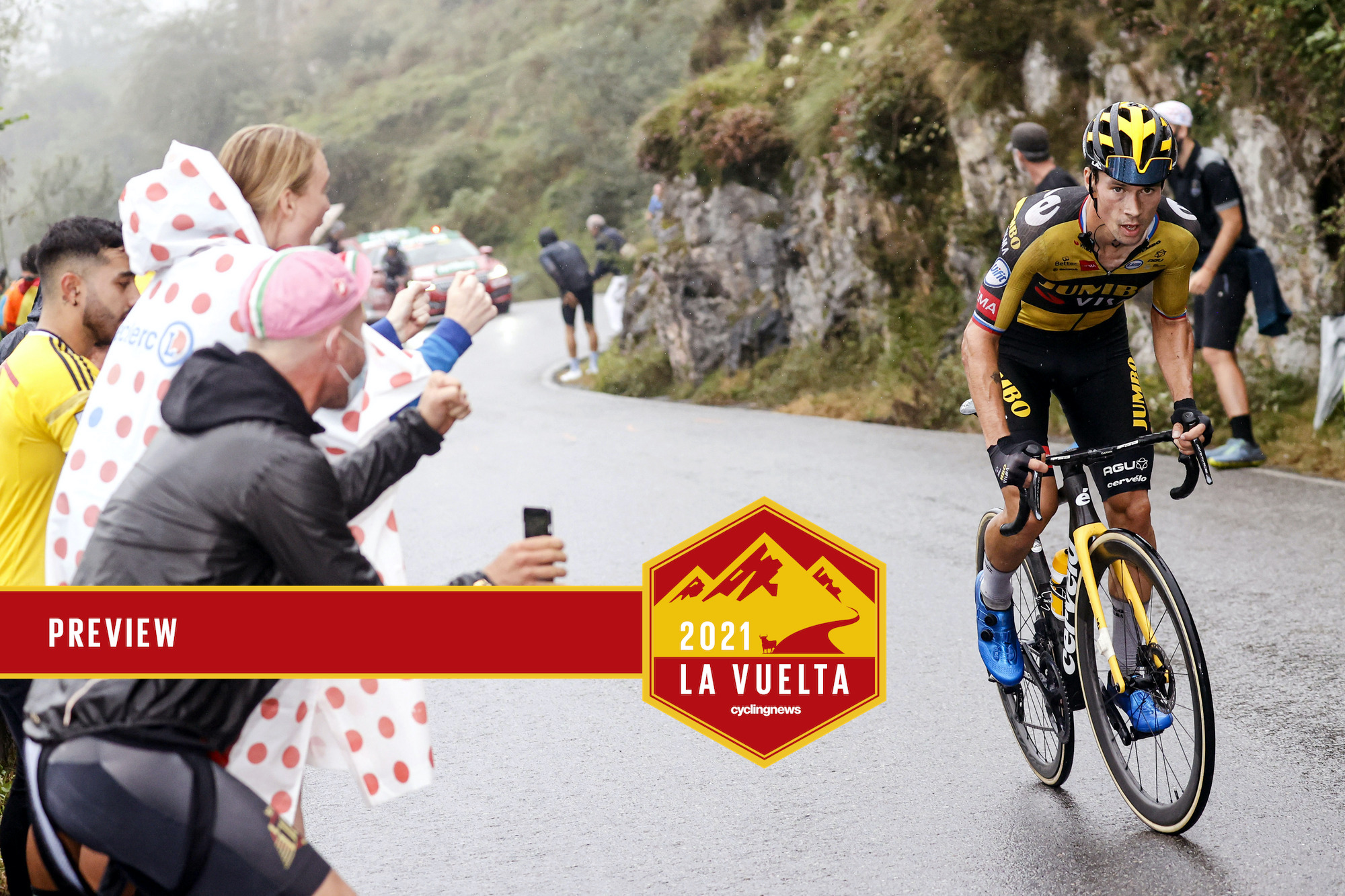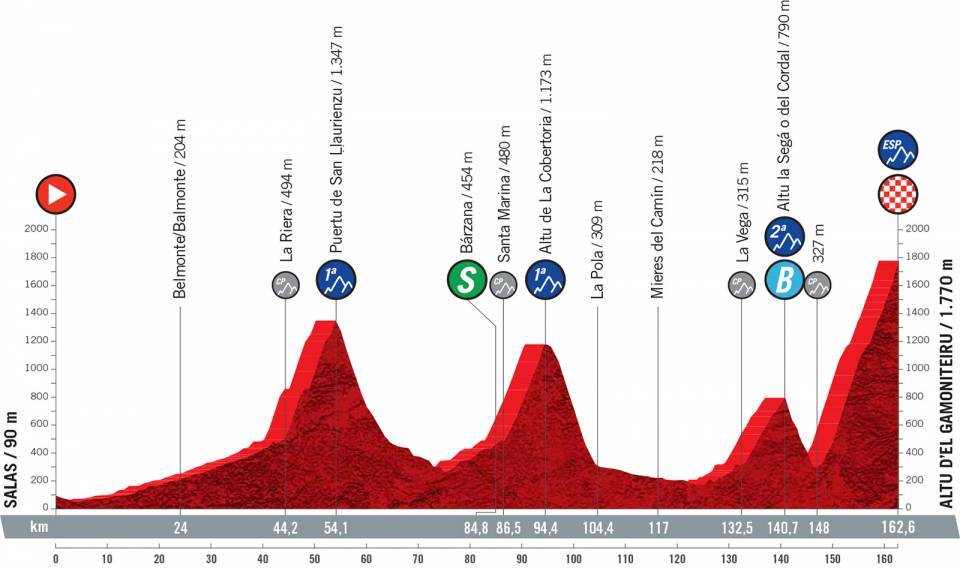Vuelta a España’s unprecedented ascent of the Gamoniteiru and road to nowhere - Preview
Vuelta tackles ultra-hard Asturian climb on Queen stage

“The last two kilometres never seem to end,” is how Asturias-born pro Dani Navarro (Burgos-BH) described the final part of the Vuelta a España’s eighth and hardest summit finish, the unprecedented ascent of the Gamoniteiru, when he tackled it last winter. But it’s far from only the last two kilometres of the climb, or indeed the entire stage, that is so tough.
Set deep in the sierras de Aramo in western Asturias and within sight of the much-feared Angliru, stage 18’s final on the Gaimoniteiru and the three classified climbs which precede it look set to present a formidable final mountain challenge from start to finish.
It can’t be overstated how critical this climb and stage could be in the 2021 Vuelta a España. Nearly 15 kilometres long and with an average gradient of 9.8 per cent, the Gamoniteiru climb is the last major ascent of the 2021 race, and depending on your preferences for suffering when riding uphill, arguably the hardest.
With the Santiago time trial as the only clear GC stage afterwards (although Saturday’s Liège-Bastogne-Liège-esque day could prove to be one as well) the climbers in the Vuelta know full well that they have to seize this final opportunity to gain inroads overall with both hands.
In some ways the terrain is very similar to Wednesday, given the region of Asturias has a seemingly unending supply of treacherous, narrow and twisting descents, often liberally sprayed with rainwater. But the climbs the riders will find on Thursday on Asturias’ more westerly side are quite different to Wednesday’s rollercoaster climb of Covadonga in the region’s centre. By and large, Thursday’s climb is more regular, with fewer changes in gradient, and almost all of it relentlessly uphill and steep.
It’s a sign of just how many tough gradients stage 18 contains that it manages to pack 4,500 metres of vertical climbing into just 162 kilometres. The only other mountainous day in the Vuelta with as much vertical climbing, stage 9 to Velefique with 4,593 metres, was nearly 30 kilometres longer.
Historically, Thursday’s stage is the inverse mirror image of Wednesday’s selection of climbs as well, which started with two unprecedented ascents of the Collado Llomeno and then continued with the Vuelta’s long-revered climb of the Lagos de Covadonga.
Get The Leadout Newsletter
The latest race content, interviews, features, reviews and expert buying guides, direct to your inbox!

Stage 18, in contrast starts with three well-known ascents, and then concludes with one that is completely unprecedented. It kicks off with the first-category Puerto de San Lorenzo, which has featured multiple times in the Vuelta a España and countless local races and the first-category Cobertorio and second-category Cordal too, have often been used as ‘warm-up’ ascents for the Angliru in previous Vueltas.
However, rather than using the usual very dangerous drop off the Cordal, scene of multiple crashes in the past, the riders will ascend up that side of the climb from the town of La Vega de Riosa, at the foot of the Angliru, and in another important variant, the Cobertorio, is tackled twice. First the race will go up its western side as the second classified ascent of the day in itself, and then, after the Cordal, the Cobertorio’s eastern side features as the lower, densely wooded, part of the Gamoniteiru.
As for the final climb, both the Gamoniteiru and the Angliru ascents are roads to nowhere, as in they are former tracks for cow herders to reach high pastures and do not lead up to any villages or even a ski station. Where the tarmac ends then, so does the climb.
However, “The Gamoniteiru is nothing like the Angliru,” Navarro told the Spanish newspaper AS earlier this year. “I’ve known this climb for years, and it’s so hard because there are no breaks in the gradient. The only slightly easier section is after coming off the Cobertorio and before moving onto the second half of Gamoniteiru when there’s a bit of false flat. But then it gets really hard, non-stop climbing, again.”
After some earlier wooded segments, too, the second half of Gamoniteiru is much more exposed, as the road threads its lonely way across and up a mixture of bare slopes and scrubby vegetation towards some radio antennae, a specially tarmacked section of mountainside for the Vuelta, and barring some stunning views of the mountains, very little else.
The altitude should not be a problem, given the summit of the climb is at 1,700 metres above sea level. But the wind, if it picks up compared to Wednesday’s near flat calm, could well have an effect and heavy rain is forecast for all day, too.
What makes it more challenging is that unlike the Lagos or Angliru, for example, the hardest segment of the Gamoniteiru is right at the end of the climb. The steepest ramps, just as the road rises towards the antennae silhouetted against the skyline its summit, reach 16 or 17 per cent and do not ease until after the line.
In terms of the race overall, stage 18 is the eighth of nine summit finishes in the Vuelta and the hardest remaining one. Whether Primož Roglič (Jumbo-Visma) will show some signs of weakness after his demonstration of climbing prowess on Wednesday remains to be seen. But if there is an opportunity to try to test the Slovene, the Gamoniteiru is the best one left.
Alasdair Fotheringham has been reporting on cycling since 1991. He has covered every Tour de France since 1992 bar one, as well as numerous other bike races of all shapes and sizes, ranging from the Olympic Games in 2008 to the now sadly defunct Subida a Urkiola hill climb in Spain. As well as working for Cyclingnews, he has also written for The Independent, The Guardian, ProCycling, The Express and Reuters.
